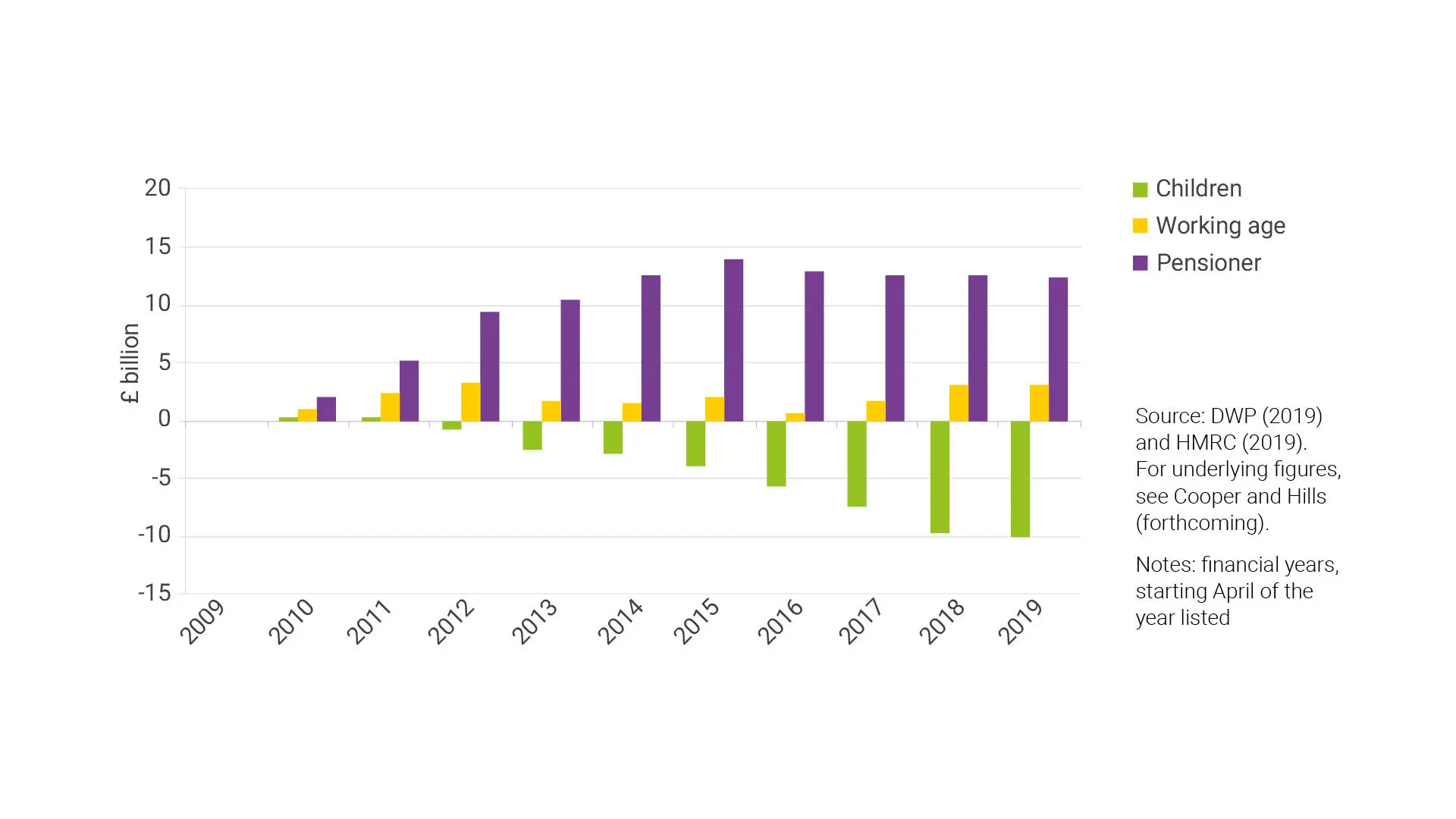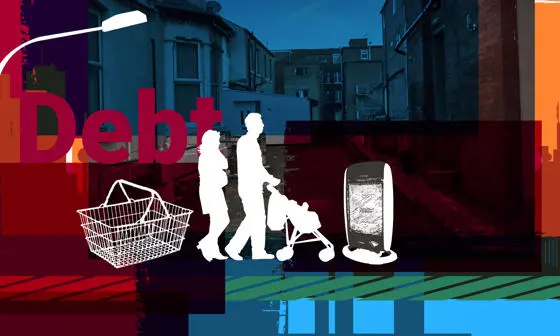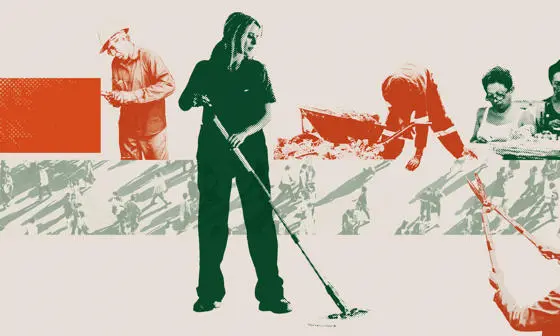Fault lines in the British welfare state and public services make for an unstable recovery

Contents
- 1. The capacity of the welfare state to protect children and people of working age from hardship has been eroded
- 2. Public services that have endured a decade of spending cuts, workforce shortages and capacity constraints cannot be resilient
- 3. Progress on tackling social inequalities has stagnated or slid back
- Building blocks for a more stable recovery
The devastating impact of the COVID-19 pandemic on the UK was exacerbated by fault lines in the welfare state and public services that developed in the previous decade. These weaknesses remain largely unaddressed, despite the policy rhetoric of "building back better", and as a result the current cost of living crisis is biting even harder.
A wide-ranging programme of research, led by Dr Polly Vizard and the late Professor John Hills and funded by the Nuffield Foundation, has identified key areas of concern, as well as providing insights about what is required as Britain transitions into the recovery phase from the pandemic and attempts to chart a course through an energy and cost of living crisis. Its message is clear: social disinvestment is inefficient and carries a heavy price.
The research covers policies, spending and outcomes in 10 major areas in the run up to the pandemic: social security, employment, early years, education, higher education, health, adult social care, homelessness and complex needs, physical safety and security, and social mobility. By looking across these areas, often studied in isolation, it becomes apparent that there were some major cross-cutting weaknesses and structural limitations of the welfare state and public services on the eve of the pandemic. Three of these major weaknesses are described below.
By 2019/20, a single person aged 25 or over with no children had entitlement to benefit at a level less than half the conventional poverty line – making a mockery of the idea of a ‘safety net’.
1. The capacity of the welfare state to protect children and people of working age from hardship has been eroded
The safety net for children and people of working age deteriorated significantly during the 2010s. While benefit rates for pensioners were protected through the "triple lock", benefits for non-pensioners fell relative to average living standards. By 2019/20, a single person aged 25 or over with no children was entitled to benefits at a level less than half the conventional poverty line – making a mockery of the idea of a "safety" net. A couple with two young children fared only slightly better, with an entitlement that left them about one-third below the poverty line.
The emergency uplift to Universal Credit introduced by the Chancellor early in the pandemic was a tacit recognition of the inadequacy of the levels at which it is normally paid. But this uplift has now been removed for people out of work, suggesting that the lesson has not been learned.
The contrasting trends in social protection during the 2010s for pensioners and for children is shown in Figure 1 (below). The graph shows social security and tax credit spending (in 2019/20 prices) in Britain in each year compared to 2009/10, by age group. On the eve of the pandemic, £10 billion less was being spent in per year in real terms on tax credits and benefits for children than a decade previously, whilst spending on pensioners had risen by £12.5 billion per year.

The 2010s can be characterised as a ‘lost decade’ of social progress.
2. Public services that have endured a decade of spending cuts, workforce shortages and capacity constraints cannot be resilient
Real spending per head on the welfare state and public services was five per cent lower on the eve of the pandemic than it had been in 2009/10, despite the growing needs of an ageing population. The intervening decade of austerity took its toll on public services. Staff shortages and resource limitations led to increasing pressures in the NHS, with 4,000 fewer general and acute beds available in England before the pandemic hit than five years previously, and bed occupancy in the autumn running at an historic high of 92 per cent.
Adult social care was already on its knees: two in five people aged 65 or over living in the most deprived areas of England had an unmet need for help with activities like dressing or washing (in 2018), and one-third of care workers were on zero-hours contracts. Pupil-teacher ratios had increased in schools, and there were long waiting lists for Special Educational Needs to be assessed and met. Prison conditions had deteriorated to the extent that basic standards of decency were compromised.
Moreover, because the smooth functioning of public services depends on one another - most obviously in the case of health and social care, but also more widely - the weakening of the social security system and the simultaneous build-up of pressure across multiple public services eroded resilience and the capacity of the UK to withstand the COVID-19 public health shock and the pressures of inflation.
3. Progress on tackling social inequalities has stagnated or slid back
The 2010s can be characterised as a "lost decade" of social progress. Several outcomes that had improved in the first decade of the 21st century stagnated or deteriorated in the second decade, and some inequalities that had narrowed widened again. This means that the further damage inflicted by the pandemic and subsequent events cut deeper and hurt more.
For example, the number of children in poverty fell in the first decade of the 21st century, but then rose again, such that 4.2 million children were already in poverty on the eve of the pandemic. Children in families with three or more children were particularly exposed, as a direct result of policies such as the benefit cap and the two-child limit on child-related benefit payments.
The stop-go, starve-and-spend, management of public spending over recent years has been inefficient and has had a devastating impact on the ability of public services to meet the needs of the population.
Developmental gaps between disadvantaged reception-age children and others in England stopped improving in 2017 and then widened again. The gap between more and less economically disadvantaged students achieving Level 2 at age 19 widened in the second half of the 2010s, as did the gap for those with special education needs.
Improvements in population life expectancy slowed during the second decade of the 21st century across the board. Life expectancy actually shortened for women living in the most deprived tenth of local areas.
Building blocks for a more stable recovery
Looking back provides some clear pointers for what is needed going forward, to repair our welfare state and public services and to build greater resilience to future shocks. The first building block is sustained and adequate funding, both current and capital, to provide security for individuals and families and to enable service providers to plan, invest, and coordinate effectively with one another. The stop-go, starve-and-spend, management of public spending over recent years has been inefficient and has had a devastating impact on the ability of public services to meet the needs of the population, in normal times and in crisis. No amount of creative reforms will produce the outcomes we want if the resources are not there to deliver them.
The second building block requires recognition of the multi-dimensional nature of economic and social disadvantage and the corresponding inter-dependence of welfare and public services. For example, fixing the holes that have been created in the social safety net for children and for adults of working age, will not only help to reverse rising poverty, but will also contribute towards stemming the growing gap in educational attainment and associated labour market vulnerabilities, as well as mitigating health inequalities.
The third building block is strengthening accountability for improving these social outcomes and reducing social inequalities. The old adage, "what gets measured, gets done", is a simplification, but a productive one. Enshrining ambitious targets and measures in legislation, allocating specific, coordinated, responsibility for meeting them, and formalising the participation of people who are at the sharp end of failure in the process of holding the policymakers to account would be a promising start.
Professor Sir John Hills (1954-2020)
John Hills joined LSE in 1986 and played a significant role in STICERD’s Welfare State Programme before co-founding CASE in 1997, which he directed between 1997 and 2016. He also co-directed LSE’s International Inequalities Institute from 2015 to 2018 and was Richard Titmuss Professor of Social Policy at LSE and the Chair of CASE.
John will be remembered as a brilliant scholar and an intellectual giant who made tremendous contributions to social science. His work has had a major impact on social policy, especially in relation to poverty and inequality. Read more on Professor John Hills' many contributions to the field of social policy.
Download a PDF version of this article





